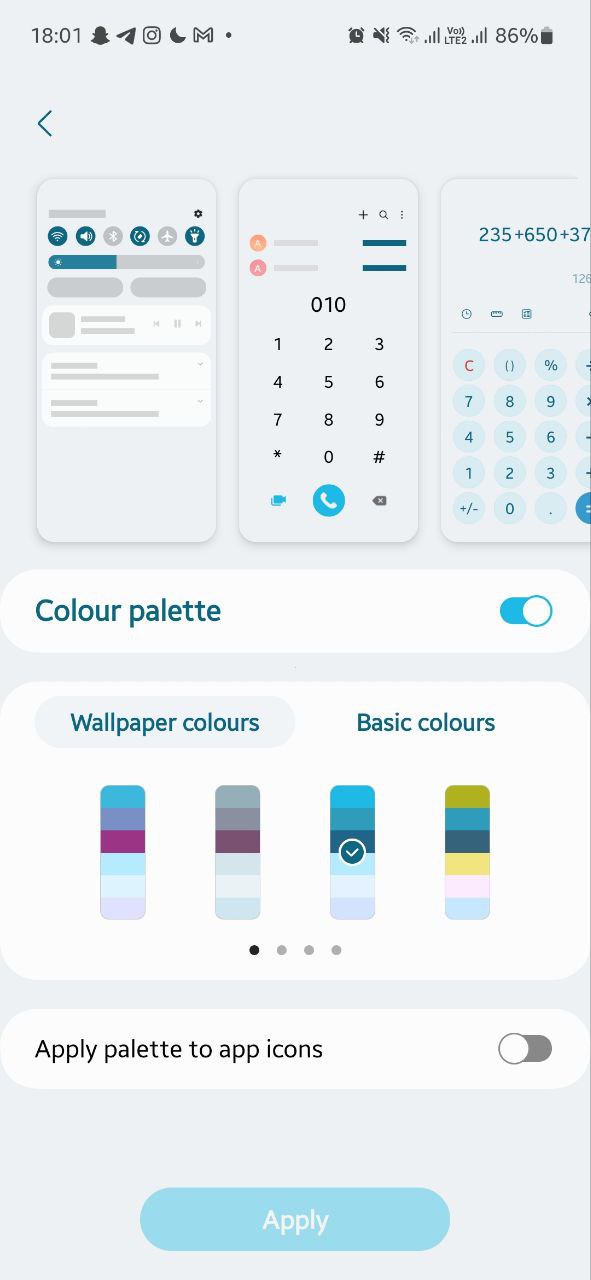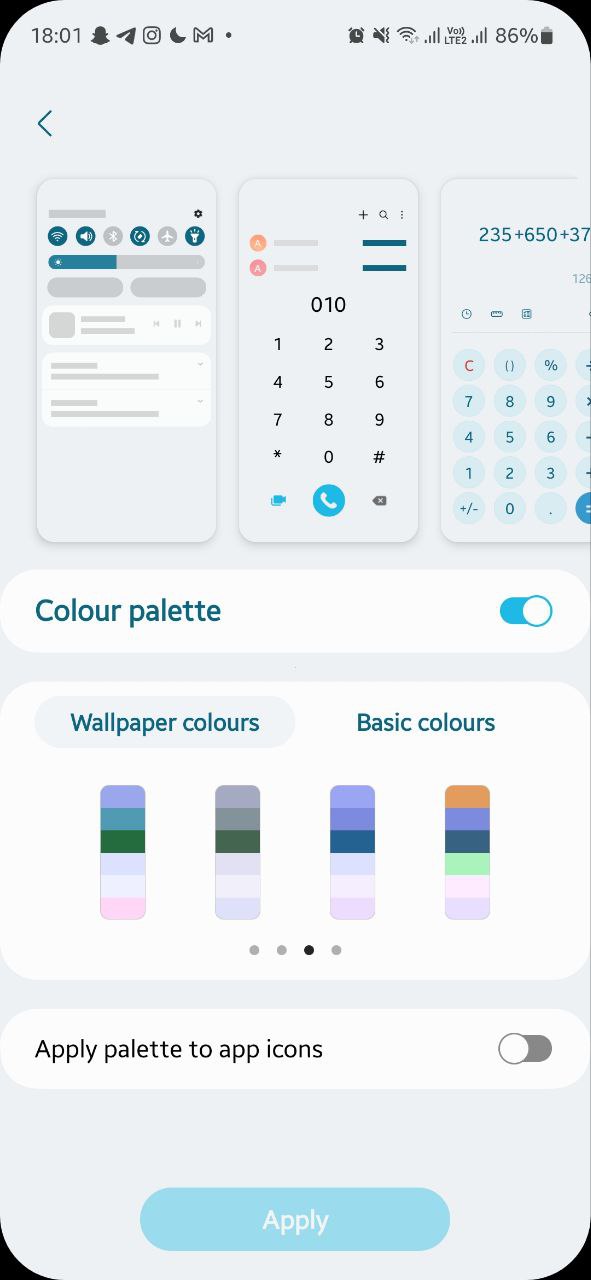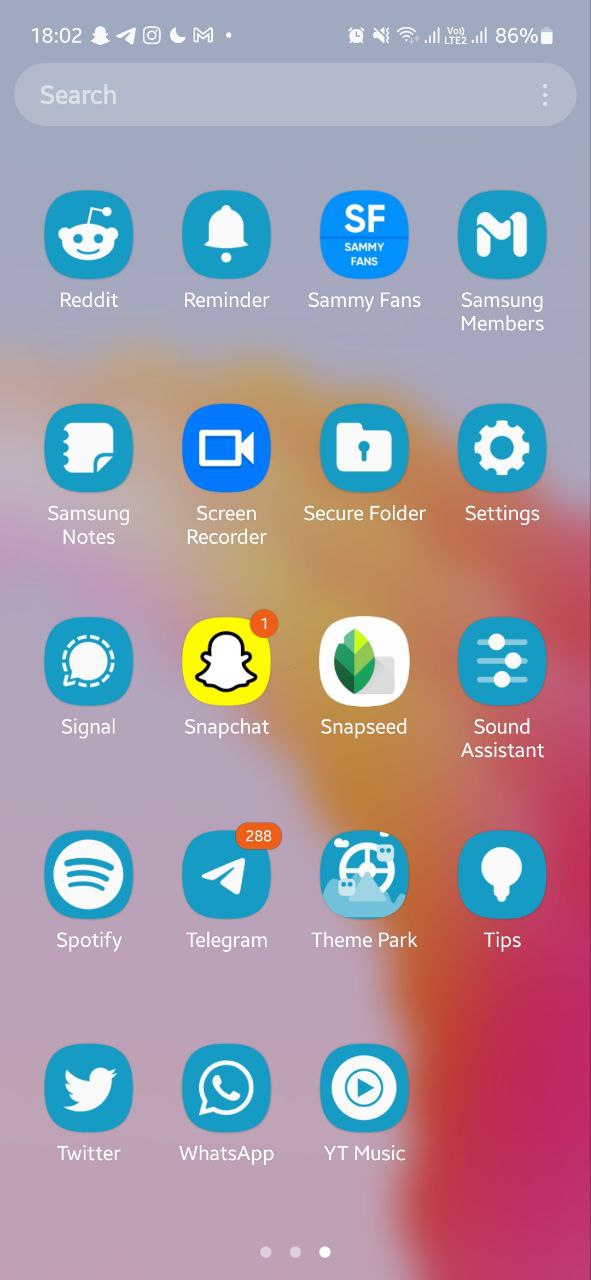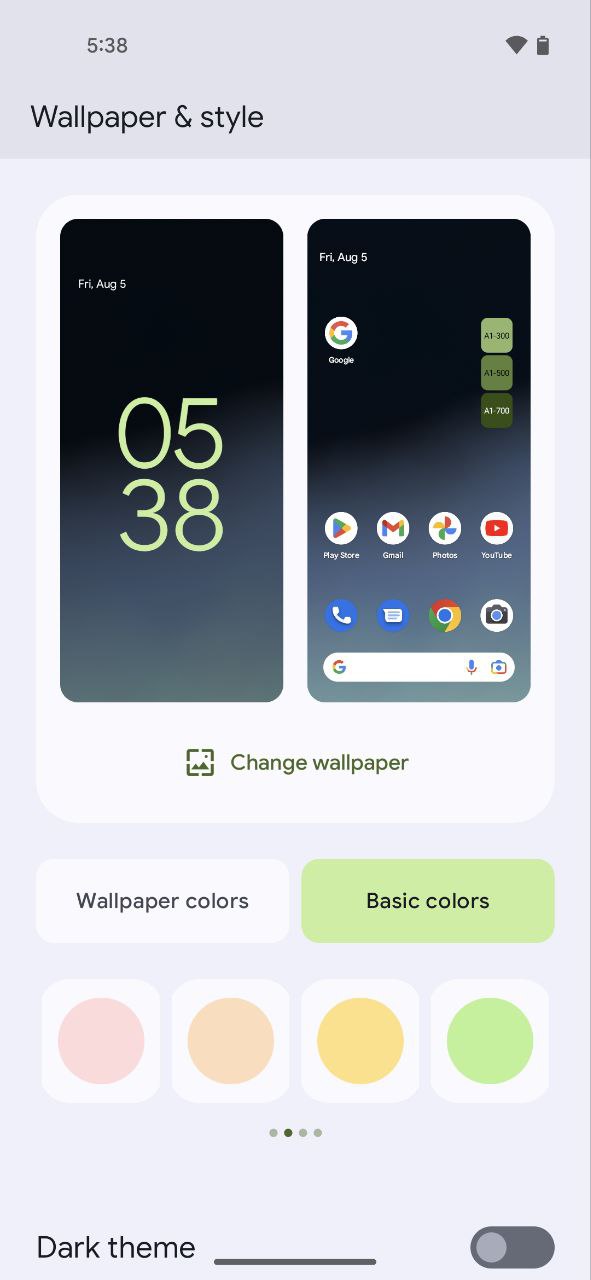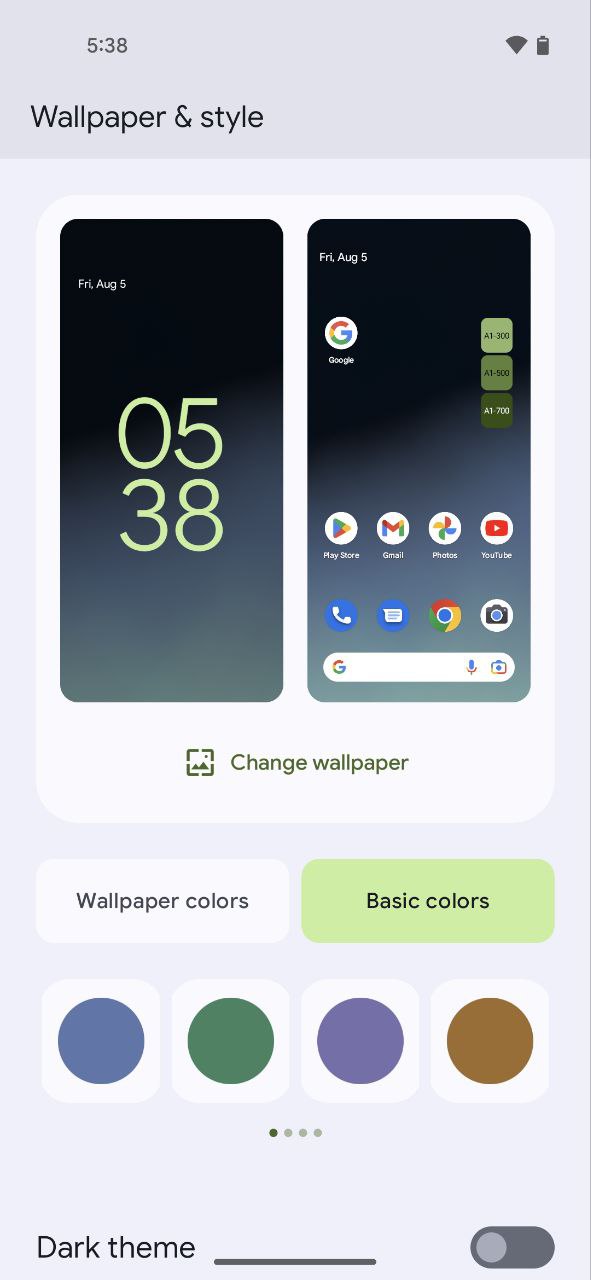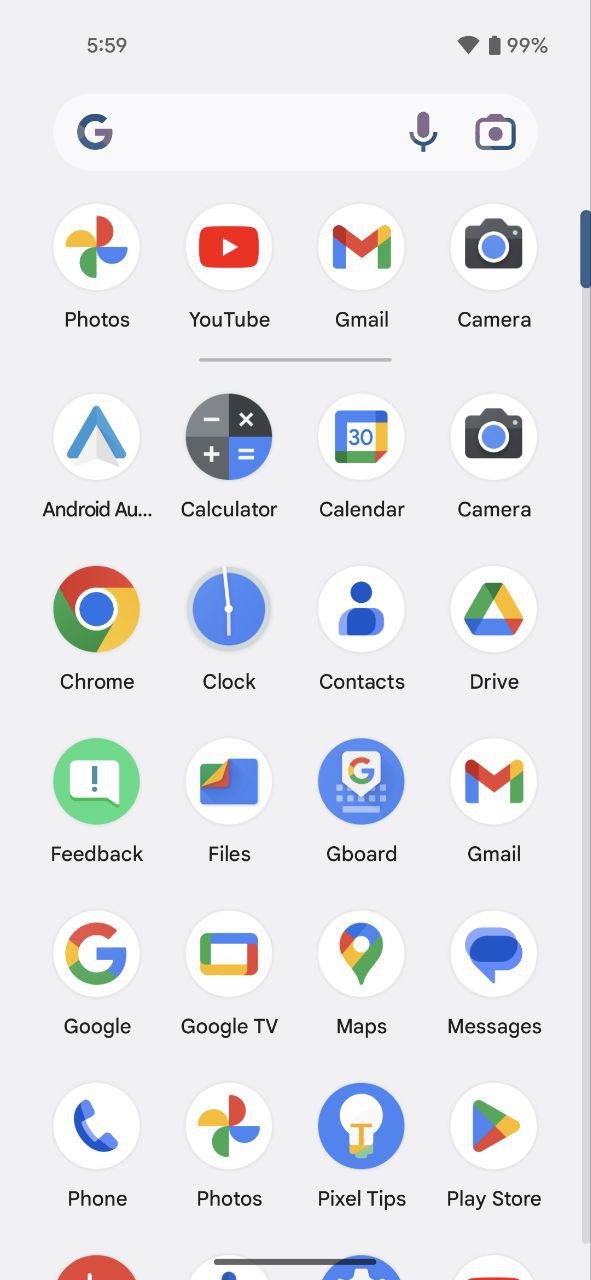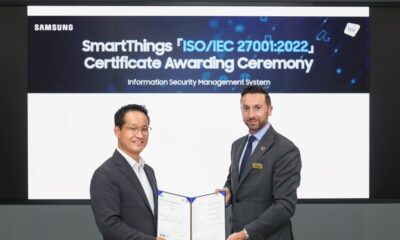News
Android 13 vs One UI 5.0 – Which better implements Dynamic theme?
Samsung’s One UI 5.0 software is based on Google’s Android 13 operating system. The Korean company adopts most of the features from Android 13 but implements them on Galaxy devices in a different way. So let’s check out how the Android 13 Dynamic theme differs from One UI 5.0.
The Dynamic theme is basically a feature of Android 12 and by now everyone might get familiar with it. It enables users to personalize their devices to align tonally with the color scheme of their personal wallpaper through a selected color in the wallpaper picker.
![]()
One UI 5.0 Dynamic theme:
On Samsung smartphones, the Dynamic theme is known as ‘Color Palette’, which offers 16 different themes that sync with the current wallpaper of your lock screen or home screen. At the same time, One UI 5.0 software also offers 8 single plus 4 dual tone Basic colors to theme your UI.
When you choose one palette, the whole theme will be applied to menus, buttons, backgrounds, and apps throughout your phone. The new software further expands the dynamic theming to more Samsung, Google, and other third-party applications so that when you apply the color palette to app icons, all applications will look similar.
Other than these, the company also provides users with the ability to completely disable the Color Palette so if they won’t like to add a color foul tough to the system UI they can go for the default – Blue, Black, and White theme combination.
Android 13 Dynamic theme:
With Google’s Material You, it became possible for Pixel phone users to have their whole system and even some apps recolored to match their wallpaper’s colors. The company has further expanded the functionality by offering multiple color palettes with Android 13 OS.
As expected, the theme matches the app icons on your home screen with the colors from your wallpaper to provide Pixel phones with an even better look. Obviously, not all third-party apps support these features, therefore, their icons don’t apply this theme.
However, the good thing is that you can still give your app screen a similar theme by not applying a dynamic theme to the app screen, at the same time, you can apply it on the home screen so the home screen will look fully personalized. Yes, Google has the ability that only enables the theme for home screen app icons and not for all app screen icons so both your screens will have a pleasant and neat look.
Android 13 vs One UI 5.0 – Dynamic theme:
Well, in my opinion, both Android 13’s and One UI 5.0’s Dynamic theming are best in their own ways. However, what I like about the stock Android 13 feature is that it offers the ability to apply the theme only on the home screen.
With this functionality, we can add applications that support dynamic themes on the home screen and apply themes to them and all these will look similar even without spoiling the look of the App screen that will show some app icons themed and others regular.
At the same time, this is the only thing I don’t like about the One UI 5.0 Dynamic theme, it applies a theme to the whole app screen and makes it look ugly. See the image below, Dynamic theme applied on Pixel 7 Pro and Galaxy S22 Ultra’s app screens.
![]()
News
Here’s why Google Messages replaced Samsung Messages on Galaxy devices

Samsung’s latest foldable phones come with Google Messages by default. The company has now revealed the reason behind this move on Galaxy devices. Samsung says Google Messages replaced Messages to foster RCS adoption.
According to AndroidAuthority, a source explained Samsung’s decision to switch to Google Messages as the default messaging app. The recently released Galaxy Z Flip 6 and Z Fold 6 come with Google Messages with RCS enabled by default.
Looks like promoting Google Messages on Galaxy devices will boost RCS adoption. Samsung Messages isn’t already installed on newer phones. However, one’s stopping you from getting it on your Galaxy from the Galaxy Store.
While many apps support the RCS feature, Google Messages offer the best user experience. Making it a default messaging app is an effort to boost the adoption of RCS tech. Apple is also preparing to bring RCS chat functionality to iMessage for iPhones.
What Samsung source said:
- Even if messaging apps follow the RCS standard, the availability may be limited depending on which app the other party uses. That’s why we decided to make Google Messages the common messaging platform, allowing Galaxy users to communicate more freely. This also enables a messaging app to respond to changes of the RCS standard more quickly and efficiently.
Previously, Samsung devices launched in the US came with two messaging apps. This time, the company has removed the Samsung Messages. During the first setup, users are notified that Google Messages is the default messaging application.
News
Samsung SmartThings gets ISO 27001 certified

Samsung SmartThings gained the international standard ISO/IEC 27001:2022 certification. The company has officially announced this major development in its global connected living platform.
SmartThings received ISO/IEC 27001:2022 certification for information security management systems. Certification reiterates that the SmartThings Cloud operates per international standards.
To be certified, a company has to meet the standard across a total of 123 detailed items, including policies for information security, access control for information assets, and incident response.
SmartThings receiving the ISO 27001 certification is the result of our sustained focus on the protection of information in a hyper-connected world with exponentially increasing intelligence.
Seungbum Choi, Executive Vice President and Head of Device Platform Center at Samsung Electronics said “this is just another step in our drive to fortify the platform’s security. We will continue to find new ways to ensure that SmartThings’ personalized services are provided even more safely.”

BSI Prez says that they have recognized that the operation capability and security level of Samsung SmartThings is excellent. It will further boost trust in the SmartThings platform and strengthen business competitiveness.
ISO 27001 is the leading global standard for ISMSs and was established by the International Organization for Standardization. It provides companies with guidance to manage the risks to information assets systematically and achieve information protection goals.
News
Dr.diary fuels Samsung Health with glycated hemoglobin algorithm
Samsung Health app integrated the Dr.diary (Doctor Diary) glycated hemoglobin feature. The blood sugar management platform announced the launch of its glycated hemoglobin estimation functionality on Samsung’s Health application.
According to ETNews, Dr.diary announced the integration of a glycated hemoglobin level feature in Samsung Health. Galaxy users will now be able to check the estimated glycated hemoglobin level provided by Doctor Diary.
To activate the feature, Health app users will have to permit certain conditions of data in the Blood Sugar service. It is worth noting that glycated hemoglobin is a key figure for diabetes diagnosis, which users will find worth using in the Health app.
Established in 2017, Dr.diary is a blood sugar management platform. It analyzes and predicts the changes in glycated hemoglobin using its own algorithm. Earlier this year, the firm secured a patent for “glycated hemoglobin estimation based on blood sugar data table.”
Song Je-yoon, CEO of Doctor Diary, said, “With our predicted glycated hemoglobin level prediction algorithm being installed in Samsung Health, more people will be able to recognize their glycated hemoglobin level and manage their health more efficiently.”

Glycated hemoglobin (HbA1c) is a standardized numerical value of the percentage of hemoglobin, such as hemoglobin, which has been glycated by glucose. Glycated hemoglobin reflects the average blood sugar level over the past 2-3 months.
Samsung Health (with Wear OS Galaxy Watch) users can conveniently check their estimated glycated hemoglobin level within the app and use this information to manage their blood sugar levels through diet and exercise.

